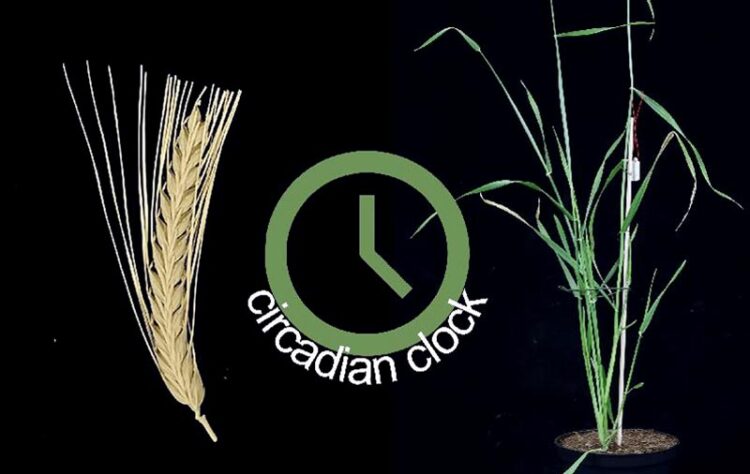Altering the circadian clock adapts barley to short growing seasons

Plants carrying the LWD1 mutation flower earlier in short days than plants that do not carry the mutation (wild-type plants).
(c) HHU/Gesa Helmsorig
To ensure that plants flower at the right time of year, they possess an internal clock, which enables them to measure the amount of daylight during a day. In a study published in the scientific journal Plant Physiology, biologists from Heinrich Heine University Düsseldorf (HHU) describe that the mutation of a specific gene makes the flowering time of barley almost entirely independent of day length. This mutation can be useful for breeding varieties adapted to altered climatic conditions with relatively mild winters and hot, dry summers.
For plants to reproduce successfully, it is essential that they flower during the correct season. If they do so too early or too late in the year, the temperature-sensitive flowers may be damaged as they develop. Plants therefore synchronise their development with various environmental factors, which enable them to gauge the time of year.
Day length (photoperiod) – the number of hours of daylight per day – is one such factor, which changes in the same way over the seasons every year. The plant has an internal clock, also known as a “circadian” clock, which enables it to anticipate the regular environmental changes between day and night and between the seasons, and prepare for them accordingly. This clock directly influences the photoperiodic pathway, which regulates flowering on the basis of day length.
The team from the Institute of Plant Genetics headed by Professor Dr Maria von Korff Schmising is researching the molecular foundations of the developmental processes in the crop plant barley. They are focusing on which genes control the development of the plant meristems – a type of tissue comprising undifferentiated cells – and how environmental factors affect these processes. Crop response to different day lengths is a key lever for adapting crops to different growing areas, climate zones and photoperiods.
In a publication in Plant Physiology, the biologists in Düsseldorf describe a novel genetic regulator of flowering time that they have identified in barley, underlying the early maturity 7 (eam7) locus. They found out that a spontaneous mutation in the LIGHT-REGULATED WD1 (LWD1) gene enables the plants to speed up their development on days with shorter photoperiods, even though they normally require days with more than 12 hours of light in order to flower.
The LWD1 mutation thus makes barley virtually insensitive to photoperiod, which in turn makes cultivation in various latitudes and marginal environments with sub-optimal growing conditions possible. In addition, the flowers of plants with this mutation exhibit greater fertility, which is reduced in plants without the mutation that grow in sub-optimal day lengths.
Lead author Gesa Helmsorig: “We were able to show that the mutation in LWD1 influences the circadian clock of the plant, presumably by affecting the processing of light signals that serve its synchronisation.” Corresponding author Professor von Korff Schmising adds: “As a result, the internal rhythmicity of the gene expression shifts in relation to the external rhythmicity of light and dark periods, and the signal, which is normally only induced on a day with a long photoperiod, is switched on, causing the plant to flower.”
Originalpublikation:
Botany: Publication in Plant Physiology
Gesa Helmsorig, Agatha Walla, Thea Rütjes, Gabriele Buchmann, Rebekka Schüller, Götz Hensel, Maria von Korff, early maturity 7 promotes early flowering by controlling the light input into the circadian clock in barley, Plant Physiology, Volume 194, Issue 2, February 2024.
DOI: 10.1093/plphys/kiad551
Media Contact
All latest news from the category: Agricultural and Forestry Science
Newest articles

A ‘language’ for ML models to predict nanopore properties
A large number of 2D materials like graphene can have nanopores – small holes formed by missing atoms through which foreign substances can pass. The properties of these nanopores dictate many…

Clinically validated, wearable ultrasound patch
… for continuous blood pressure monitoring. A team of researchers at the University of California San Diego has developed a new and improved wearable ultrasound patch for continuous and noninvasive…

A new puzzle piece for string theory research
Dr. Ksenia Fedosova from the Cluster of Excellence Mathematics Münster, along with an international research team, has proven a conjecture in string theory that physicists had proposed regarding certain equations….



